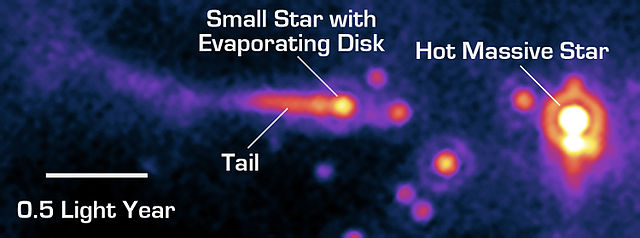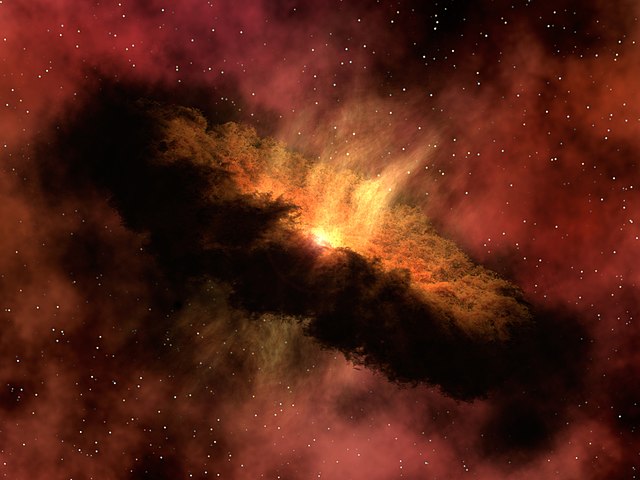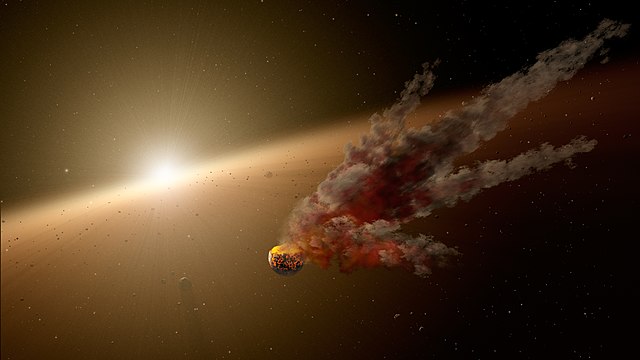Photoevaporation is the process where energetic radiation ionises gas and causes it to disperse away from the ionising source. The term is typically used in an astrophysical context where ultraviolet radiation from hot stars acts on clouds of material such as molecular clouds, protoplanetary disks, or planetary atmospheres.
Eagle nebula pillars being photoevaporated
Photoevaporation occurring to a protoplanetary disk due to the presence of a nearby O-type star
A planet is a large, rounded astronomical body that is neither a star nor its remnant. The best available theory of planet formation is the nebular hypothesis, which posits that an interstellar cloud collapses out of a nebula to create a young protostar orbited by a protoplanetary disk. Planets grow in this disk by the gradual accumulation of material driven by gravity, a process called accretion. The Solar System has at least eight planets: the terrestrial planets Mercury, Venus, Earth, and Mars, and the giant planets Jupiter, Saturn, Uranus, and Neptune.
The eight planets of the Solar System with size to scale (up to down, left to right): Saturn, Jupiter, Uranus, Neptune (outer planets), Earth, Venus, Mars, and Mercury (inner planets)
A protoplanetary disk
Asteroids colliding during planet formation
The Sun's, planets', dwarf planets' and moons' size to scale, labelled. Distance of objects is not to scale. The asteroid belt lies between the orbits of Mars and Jupiter, the Kuiper belt lies beyond Neptune's orbit.






